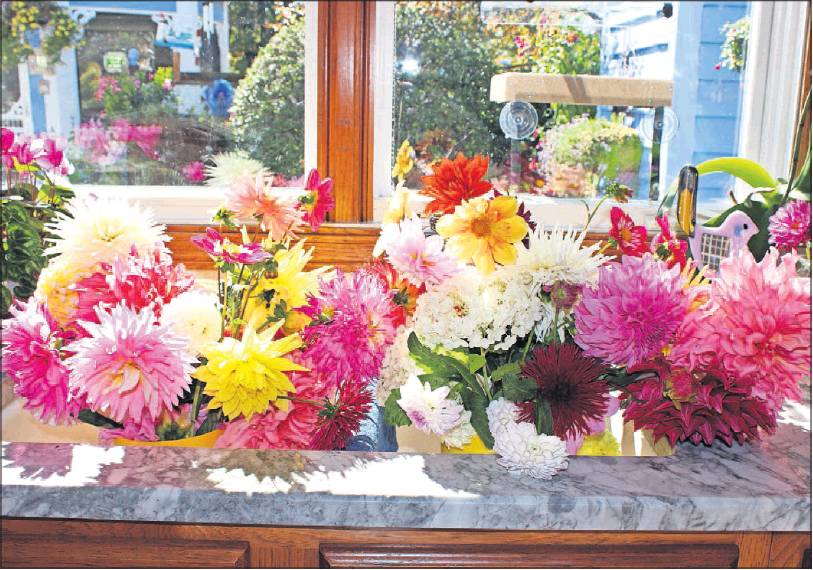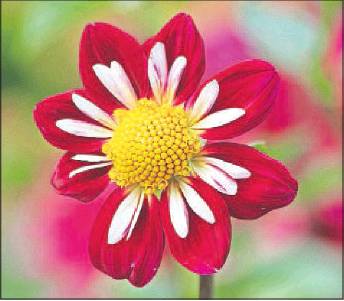Colorful, varied, easy to grow: You’ll want dahlias by the dozen
By Diana LockwoodFor The Columbus Dispatch
Dahlias are like potato chips: You always want one more.
Just ask Linda Laine, a gardener and dahlia enthusiast who lives in Westerville.
She and her husband, Jeff, “started out with 17, next year we had 40, next year we had 80, the next 120 and 150 and now we are at 175,” she wrote in an email.
Her “addiction,” as she calls it, is understandable — dahlias come in seemingly infinite variety and are the queens of the late-summer garden.
The plants range from less than a foot high to taller than the average adult. Flowers come in every color but true blue, and they range from cute little miniatures to “dinner-plate” behemoths that can reach 1 foot across.
Growing from rootlike structures called tubers, they become flower-producing machines just as many other ornamentals are finishing for the season, offering much-needed pizazz and color.
As stunning as dahlias look, they’re surprisingly easy to grow.
“In many respects, ‘dahlia culture’ is similar to ‘tomato culture,’ ” according to the website of the American Dahlia Society (dahlia.org). “If you can grow tomatoes in your garden, you can successfully grow dahlias.”
Well-drained soil and lots of sun are essential. As with many ornamentals, an inch of rain per week is about right; during late-summer dry spells, you might need to water.
In spring, some growers plant tubers directly in the ground after the danger of frost has passed; others, such as the Laines, get a head start by planting tubers indoors in pots, then placing them in the garden around mid-May.
Like most growers, Linda Laine recommends adding compost to a dahlia bed. For large varieties, she suggests inserting stakes into the soil at planting time; if you wait till stems become tall, you risk damaging the underground tubers.
Many enthusiasts take various steps to encourage large blooms and strong plants, such as pinching back stems and removing secondary flower buds.
As with most garden topics, however, there is often more than one right answer.
When the Laines give talks on dahlias to groups and a participant asks a question, “I’ll say yes and Jeff will say no,” she said with a laugh by phone. (She and her husband are program directors for the Greater Columbus Dahlia Society, which is planning a show next weekend.)
Many dahlias will keep cranking out flowers from now through early autumn. When the first hard freeze is forecast, Laine urges picking as many as you can the night before — because blooms left outside will be black and dead by morning.
That’s your cue to dig up the tubers, then clean, dry and store them till spring. Laine overwinters hers in unsealed plastic bags with wood shavings such as those sold for hamster cages.
With hundreds growing in her garden, “People ask, ‘Don’t you have to dig up all those tubers?’” Laine said. “No, my husband does.”
Diana Lockwood, a freelance writer covering gardening topics, posts on Facebook at www.facebook.com/ mrsgardenperson.



